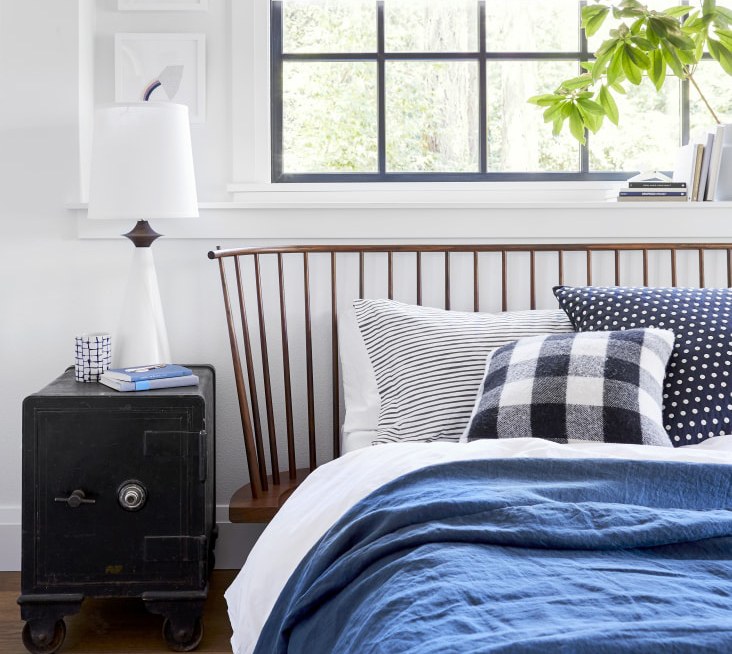
Designed by Emily Henderson. Photo by Sara Tramp.
Let’s face it: Many of us are sleep deprived. According to a study done by the Centers for Disease Control and Prevention, one in three adults don’t get the recommended seven or more hours of healthy sleep, which can lead to a number of health problems, including diabetes, high blood pressure, heart disease, stroke, and frequent mental distress. Sleep is important. But it turns out that the secret to getting the best sleep isn’t going to bed at the exact same time each night—it’s actually the opposite.
“Waking up at the same time will help you get optimal sleep at night,” says Michael Breus, Ph.D., clinical psychologist and author of The Sleep Doctor’s Diet Plan. Our circadian rhythm, the internal clock that runs our sleep and wake cycle, resets every morning. To get in sync with this reset, Breus explains that you should focus on this being the most consistent in your sleep routine over a consistent bedtime to feel the most well-rested.
With that in mind, we asked Breus to walk us through the ways we can set our internal clock to consistent wake-up time. Read on for his advice.
Set Several Alarms
This seems like an obvious tip, but it’s important to train your body to wake up at the same time every morning with the help of a good old alarm. Pick a time that makes the most sense to you and your lifestyle (“A wake-up time doesn’t have to be early to be appropriate,” Breus says) and set that alarm every morning.
Breus even suggests having a second or third alarm placed across the room to force you to get up to turn it off. Your body will begin to adjust in seven to 10 days, and after 28 days, you should be completely used to your new set wake-up time—no snooze necessary.
Have a Realistically Consistent Bedtime
Having a set wake-up time doesn’t mean you can regularly go to bed late and still feel well-rested. Your bedtime is still connected to your wake-up time and you should always aim to get enough sleep every night, Breus explains. The difference here is that if you’re keeping good sleep habits, your body will be more forgiving if you have the occasional late night or two. “If your sleep is consistent, having a crappy night is not as bad as it would be if your sleep schedule was inconsistent,” he says.
He also suggests coming to a better sense of understanding (and acceptance) of whether you’re a night or morning person.“This gives you a better understanding of training yourself to wake up at a certain time,” he says.
Keep Naps Short and Sweet
If you’re sleeping at the right time and getting the right amount of sleep, you shouldn’t need a nap. But if you are a nap enthusiast, don’t stress about giving up the habit. If you do need to doze off for a bit, Breus recommends doing so in the afternoon between 1 pm and 3 pm for 25 minutes tops. “In the afternoon, your body temperature drops and releases melatonin. If your nap surpasses 25 minutes, you transition into a deep sleep, which will probably make you feel less refreshed,” he says.
Consider Supplements
If you need to take something to ensure a good night’s sleep, you might want to think about taking supplements. Studies show that taking melatonin can improve sleep quality, and Breus also suggests considering a dietary supplement, like SeroVital Advanced, which contains an amino-renewal complex that works synergistically to improve sleep. Just remember to listen to your body and consult with your physician before beginning any new supplements.
So there you have it: four simple ways to master getting up at the same time every morning. May good sleep be ever in your future.